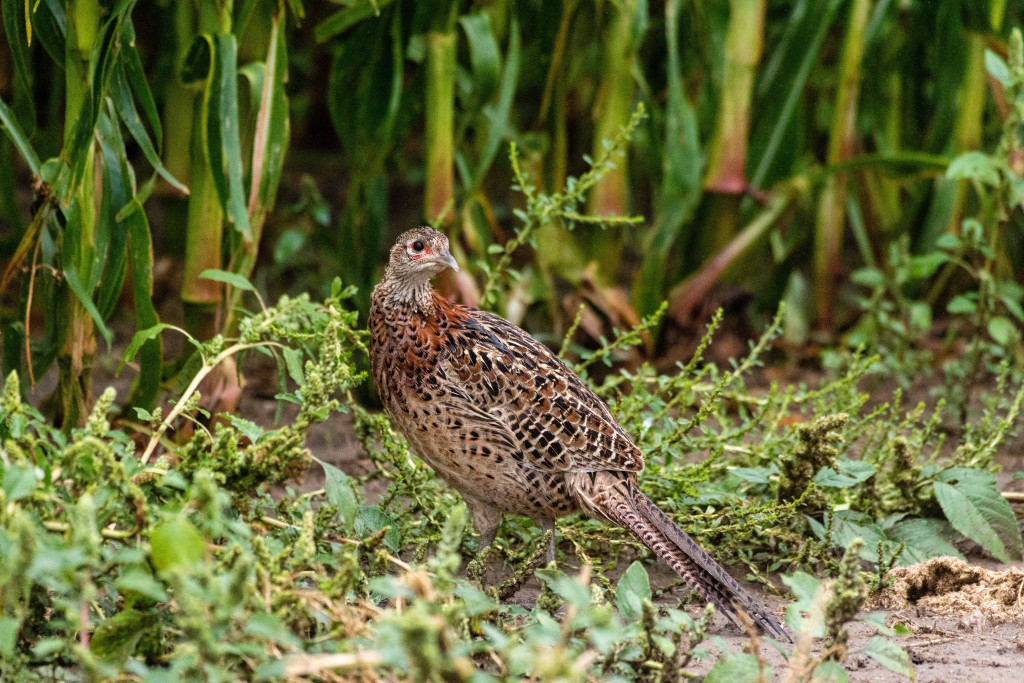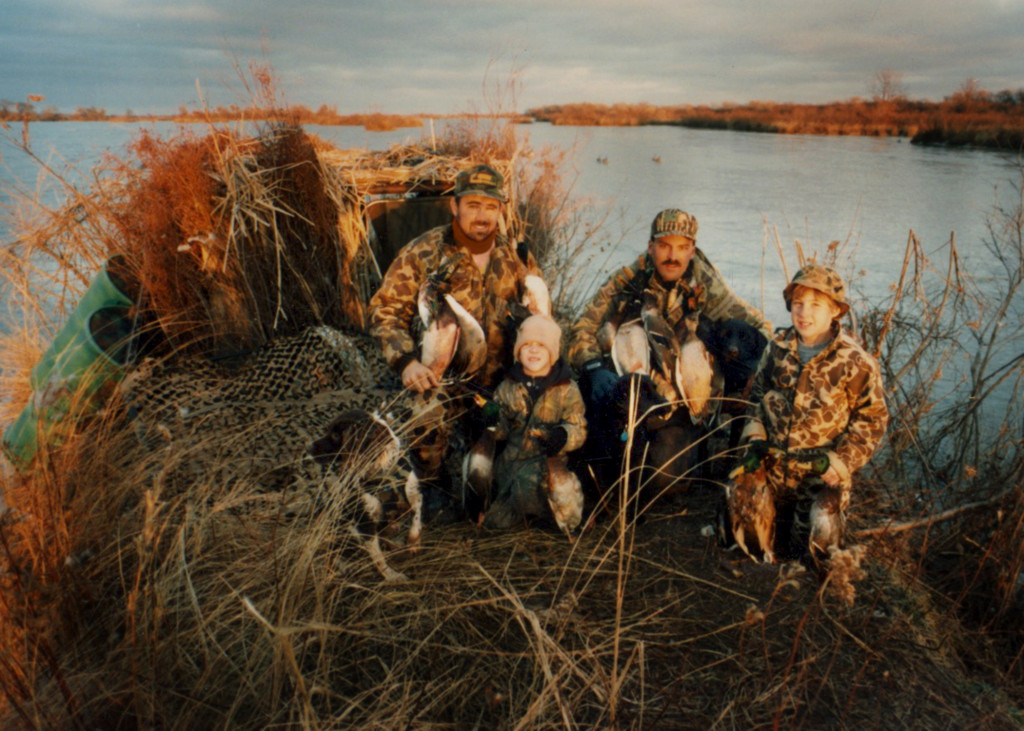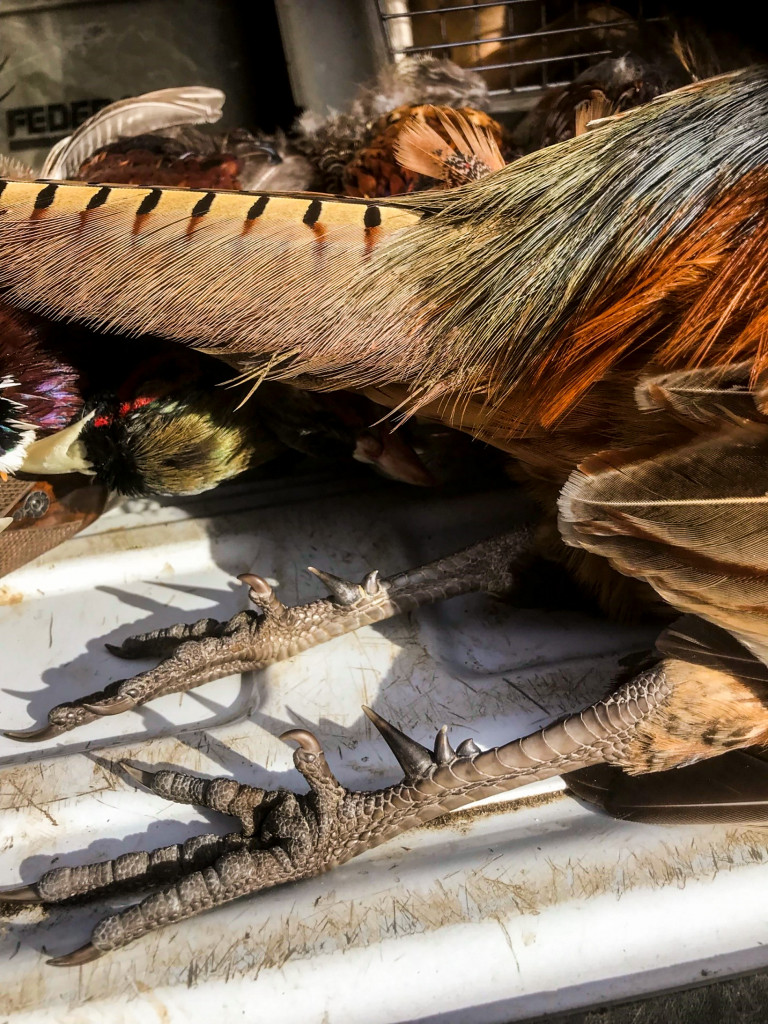
By Cassidy Wessel, Wildlife Biologist
I can remember the first rooster pheasant I ever held as a kid, standing over the trash can in our garage helping my dad clean birds and thinking that this brown, purple, blue, red and green iridescent thing might just be too pretty to pluck. And I’m sure I did think “pluck” — skinning a bird at that time would have been completely foreign to me. Pheasants were rare table fare.
Being the fifth generation in a town in eastern Nebraska where the Platte and Loup rivers meet, our family first and foremost hunted ducks. Sure, we’d sit in the deer stand once in a while. And we might abandon the duck blind now and again to walk a weedy towhead and answer the taunt of a ringneck crowing across the channel on a bluebird day. But until I took a job as a Pheasants Forever Farm Bill biologist in northeastern Nebraska at age 23, the only thing I could have told you about pheasant hunting was that hunters wore bright orange and had to walk through the field in a line.

Birds of a Different Feather
As duck hunters coming of age in the early 2000s, my siblings and I were reaping the benefits of the conservation efforts of generations before us. Regulated harvest, management and international cooperation to benefit migratory waterfowl had begun with the landmark passage of the Migratory Bird Treaty Act in 1918. When the droughts of the “Dirty Thirties” helped underline that science-driven habitat management and protection were an essential part of the equation, we got the Federal Duck Stamp, the expansion of National Wildlife Refuges and Ducks Unlimited. Waterfowl management and habitat development and protection picked up again after World War II and have gained momentum since.
By the time I was old enough to shoulder my grandpa’s old .410, the only thing most Platte River duck hunters felt they really needed to do was buy their duck stamps and permits every year, spend some money at the DU banquet, pick a good spot for the blind and get the decoys ready to go. Every fall, when the weather turned, ducks and geese would show up from some magical place up north.
Pheasant hunting, however, has a far different backstory. Pheasants aren’t magically created in a far-off place and delivered to us on a cold north wind. Pheasants are homegrown, intimately tied to how economy, policy and technology shape the landscape right here in our own neighborhood. We don’t get to share the load with other places, as is the case with waterfowl: letting Canada, Alaska and the Dakotas handle nesting and brood-rearing, while the southern United States and northern Mexico handle wintering needs. The average home range of a pheasant is 1.5 square miles, so places where people want pheasants need to have it all.
The Good Old Days
In my 12 years of learning to become a pheasant hunter, early lessons included opportunities to hunt over pointing dogs, how and where to look for birds in different types of weather, and the value of good boots and wearing something just a little thicker than plain old jeans. I also learned that in many ways, pheasant hunters were a lot like the duck hunters I had grown up with — there was the passion and dedication, the appreciation of camaraderie and tradition, and sharing good stories and memories. Of course, a day with lots of action never hurt.
In some ways, pheasant hunting was duck hunting flipped on its head. Where I had grown up listening to stories of scarcity in the old days of waterfowl hunting — of waiting all morning, morning after morning, and being excited just to see a flock or a Canada goose fly that stretch of river for the first time — pheasant hunters’ stories of the “good old days” had birds boiling out of Soil Bank fields by the hundreds in the 1960s. When Conservation Reserve Program enrollment peaked in the mid-1990s, everyone remembers the big hunter breakfasts and town fundraisers on opening weekend and, if you didn’t have your limit by noon on the first day, then “Buddy, your gun barrel must be bent.”
Most people age 60 or older can remember a time when eastern Nebraska still grew wheat, oats and other small grains, and grass pastures were more common. Most people age 40 and older can recall the time before weeds in ag fields were controlled with chemicals. Today’s landscape is different. Without small grains in cropping rotations, we lose nesting potential, and without weeds, high quality brood-rearing areas are fewer and farther between.
CRP and Bird Numbers
Before we lost these landscape features, all we had to do was add winter cover to meet the birds’ survival needs. Furthermore, we could also create places where we knew birds would want to be throughout the hunting season. In today’s landscape, our responsibilities have grown from simply getting birds through the winter. Today, we also need to provide places for hens to be productive nesters and places where broods can successfully forage for insects. And we have to do all of it on far fewer acres.
The Conservation Reserve Program, initially created in the 1985 Farm Bill to reduce soil erosion, has always been a great tool to put winter cover on the landscape. CRP has since adopted wildlife benefit as one of its program objectives, and many of today’s enrollments are tailored toward providing quality habitats. In Nebraska, starting in 2008, a special CRP practice called State Acres for Wildlife Enhancement (SAFE) was designed to meet all the life cycle needs of upland game birds: nesting, brood rearing and winter cover. However, asking one piece of land to do three jobs takes intentional design and heightened management effort.
All these challenges combined made for a discouraging group rhetoric when I was starting to learn how to be a pheasant hunter:
“We have no pheasants, and we have no habitat!”
“If I want to have a good day pheasant hunting, I just cross the river and spend it in South Dakota!”
Focus on Pheasants
Then, in 2014, there was a twist in the story. CRP experienced an increase in annual per acre payments at about the time commodity prices were dropping. This, combined with good incentives for establishment made CRP SAFE acres a popular option. Between 2015-2017, landowners enrolled or re-enrolled over 20,500 acres in three of the same counties that had recorded some of the highest rates of grassland loss in the nation from 2009-2012. Clusters of habitat began to pop up on the landscape, and all of a sudden, learning to be a pheasant hunter became a whole new ball game.
The timing of increased interest in CRP enrollments was good. In response to hunter concerns, many state agencies poured resources into improving pheasant habitat through a number of named initiatives. The Focus on Pheasants Initiative in Nebraska soon morphed into our statewide Berggren Pheasant Plan, and biologists had financial resources to incentivize greater management efforts on private land. At the same time, Pheasants Forever celebrated its 30th birthday in the midst of unprecedented organizational growth by adding more biologist positions. With more CRP available, many landowners chose to allow public walk-in hunting access for an additional payment.
As a result, my experiences in the field were no longer mirroring what people had been telling me. We suddenly had birds to pursue and places to pursue them. For the last few years, it’s a rare day when we decide to go walk for a few hours and don’t come home with dinner. On the days we don’t, I’m pretty sure it’s because my gun barrel must have been bent.
New Chapter
In this new chapter of learning to become a pheasant hunter, I find myself gravitating toward places where hunters who spend the most time talking about the glory days would walk on by.
“Look at that fence line!” a hunter once told me on opening day. “I’ve been doing this since I was 10 years old, and now I’m 60, and if there was a bird in this whole country, it would have been sitting right there! I’ve been walking all morning, and I haven’t seen a thing. There’s just no birds here!”
I didn’t have the heart to tell that hunter that a mile away, the last group of hunters I had interviewed all had birds in hand; they had seen at least 40 roosters, and that field didn’t look anything like his fence line. This hunter isn’t the only person who has a hard time believing there are birds to be found.
And yet, with intentional habitat placement, good design and active management, we see glimmers of hope.
Last Hunt of the Season
On the last Sunday of the 2021-2022 pheasant season, I joined a few family and friends for a year-end hunt in an area where significant effort had been put into habitat development and management during the first round of the Berggren Pheasant Plan. It was hot, almost 50 degrees Fahrenheit, and there was definitely no snow. When I showed up at 12:30 p.m., the four people who had walked the first field already had five birds between them. The landowner, a friend of his, and I made seven of us for this next walk.
We walked the high-diversity CRP and saw lots of roosts, but only bumped a few birds — all too far out ahead of us to take a shot. Next, we walked some newly seeded CRP, a long narrow piece along a draw, and again, lots of sign, but no birds. Our final option was about 10 acres of CRP, so new that the perennial grasses had not yet begun to establish. The 10-foot-tall annual weeds were so thick that in some places, you had to get a running start to make it through. As we rounded the south end, it thinned out a bit, and the dogs’ tails started doing helicopter whirls.
One rooster got up — “bang, bang!” The landowner made a great shot and 30 more pheasants rose into the sky. They flew to the north, too far for most of us to take a poke, but a few coasted toward our blockers at the top of the hill. I heard gunshots and another bird fell from the sky.
“Who shot grandpa?” my husband, Scott, joked when we all got back to the truck and lined up the birds on the tailgate. As we gathered in to have a look at the 23-inch tail feathers, someone else said, “Wow, look at those spurs! That bird has triple spurs!”
Pheasant hunters perhaps aren’t as religious in their communications as duck hunters with morning flight reports, but news spreads quickly, nonetheless.
“Three spurs? Not likely possible. In 50 years, I’ve never seen it,” was at least one of the replies from long-time pheasant hunter friends.

We hunted one more field that day and put two more birds in the bag. As we lined up birds, people and dogs for the end-of-the-day photo, my dad said, “You know, I spent three days in South Dakota earlier this month, but the hunting was nothing like this. Who’d have thought one of my best hunts of the year would be right here in eastern Nebraska?”
I’ve spent a lot of time over the last 12 years talking to pheasant hunters, first with Pheasants Forever and now as a Nebraska Game and Parks biologist. That comment, right there, has been a long time coming. I’ll bet it has to be rarer than a three-spurred rooster.
Berggren Pheasant Plan 2.0
Nebraska Game and Parks Commissioners recently approved the Berggren Pheasant Plan 2.0, which gives biologists and landowners another five years to partner toward efforts of habitat management and creation. Lower CRP rental rates will make it tougher for farmers to dedicate additional acres to habitat, but in a new research effort with the University of Nebraska, Game and Parks will gain an even better understanding of creating functional habitat complexes for sustainable pheasant hunting in eastern Nebraska. If we can learn to identify those places better, there could be a lot of complexes just waiting to be created. But it’s important that this knowledge is shared beyond just biologists. Just like the sportsmen who advocated for the conservation actions that made a difference for waterfowl decades ago, we upland hunters also have a job to do.
The CRP fields we walked for our last hunt of the season were intentionally built and intentionally managed with assistance from the Farm Service Agency’s CRP program, Game and Park’s Berggren Pheasant Plan, the Natural Resources Conservation Service, Pheasants Forever and neighboring landowners who had common conservation interests.
How many more places like this can we create? Not just for pheasants and pheasant hunters, but for all wildlife — grassland birds, butterflies, mammals and reptiles — that also need these places to exist.
